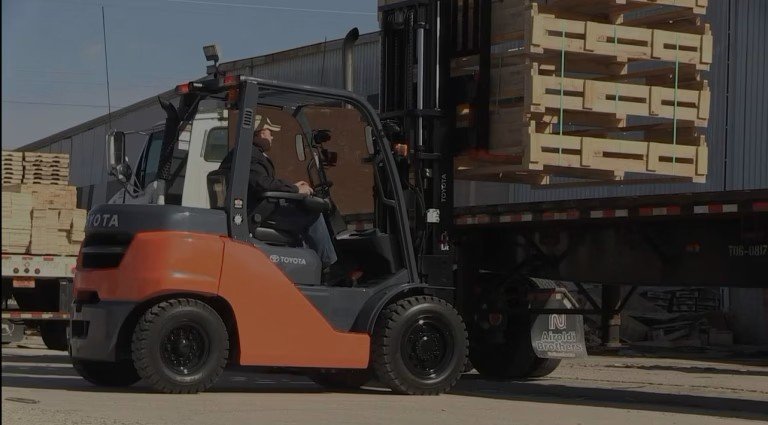In the world of material handling and logistics, time is often equated with money. Efficiency, therefore, becomes a prime concern for operations managers looking to streamline processes and maximise productivity. One pivotal way to achieve this is through the use of advanced lifting equipment that can dramatically reduce labour costs, increase safety, and enhance operational throughput.
Understanding the Role of Lifting Equipment in Material Handling
Material handling is a critical component of various industrial domains, including manufacturing, construction, warehousing, and distribution. The primary goal of material handling is to manage the movement, protection, and storage of materials throughout manufacturing, distribution, consumption, and disposal. An indispensable element in achieving this efficiently is the right lifting equipment which is designed to facilitate the easy and safe movement of goods.
The Spectrum of Lifting Equipment
Lifting equipment encompasses a wide range of tools and machinery specifically crafted to hoist, lower, and move loads of different weights and sizes. From forklifts and cranes to hoists and lift tables, each piece of equipment serves a distinct purpose within the scope of material handling. The selection of the appropriate equipment is contingent upon factors such as load weight, vertical lift required, and the nature of the operation.
Advantages of Employing Advanced Lifting Equipment
Integrating advanced lifting mechanisms within a material handling system offers numerous benefits:
Enhanced Productivity
The foremost advantage is the improvement in productivity. Automated or semi-automated lifting devices can operate faster than manual labour, allowing for a quicker turnaround of tasks and a more efficient workflow. Moreover, such equipment can work tirelessly without the need for breaks, leading to a potentially round-the-clock operation.
Improved Worker Safety
Safety is another critical concern in material handling. Advanced lifting machinery comes with built-in safety features that protect operators from potential injuries associated with lifting heavy items. By relying on mechanical aids, the risk of strain, sprain, and musculoskeletal disorders among workers is significantly reduced.
Cost-Effectiveness
While the initial investment in quality lifting equipment may be substantial, the long-term savings in terms of reduced labour costs, lower insurance premiums, and diminished risk of workplace injury claims can be considerable. In addition, the potential for increased productivity can lead to increased revenue streams, further justifying the initial expenditure.
Mastering the Use of Lifting Equipment
Mastery of lifting devices entails more than just acquiring them. It involves a comprehensive understanding of application, diligent maintenance, and continual assessment of handling needs:
Choosing the Right Equipment
The first step is to select the right lifting equipment for the job. This decision should be guided by the load characteristics, lifting height, frequency of use, and the environment in which the lifting will take place. Engaging with professionals and suppliers who specialise in such equipment can provide invaluable guidance.
Regular Maintenance and Inspection
Consistent maintenance is crucial to ensure that lifting devices remain in optimal working condition. Regular check-ups can identify wear and tear before it leads to equipment failure. Furthermore, official inspections as decreed by relevant authorities and compliance with safety standards cannot be overlooked.
Operator Training
The efficacy of lifting equipment is also dependent on the skill of the operator. Proper training programmes should be instituted to ensure that operators are adept at using the machinery safely and efficiently. Additionally, fostering a culture of safety first can help prevent accidents and near-misses.
Adaptation to Technological Advancements
Finally, as technology evolves, so does the capabilities of lifting equipment. Organisations should stay abreast of the latest innovations and consider upgrades or additions to their arsenal that could yield even greater efficiency and safety dividends.
The Future of Material Handling
The future of material handling seems poised to be shaped increasingly by technological innovation. With advancements in robotics, automation, and the Internet of Things (IoT), the potential for even more efficient and sophisticated lifting equipment is on the horizon. In due course, these technologies may enable a fully automated material handling process, reducing the need for human intervention and further carving out opportunities for cost savings and productivity increases.
Conclusion
Material handling is a challenging and crucial field that impacts the success of various industries. The role that advanced lifting equipment plays in achieving operational efficiency cannot be overstated. By effectively elevating, moving, and placing materials with heightened efficiency and safety, companies can keep pace with the demands of the modern market. It is evident that those who master the use of such tools stand to gain a significant competitive advantage, leading to more streamlined processes, safer work environments, and ultimately, financial success.
Staying Ahead with Advanced Lifting Equipment
To remain competitive and efficient, businesses should invest in the latest lifting solutions that are aligned with their specific material handling requirements. Organisations that understand and embrace the power of lifting technology are set to ride the wave of progress, ensuring their operations are not just surviving but thriving in the fast-paced industrial landscape of the future.


